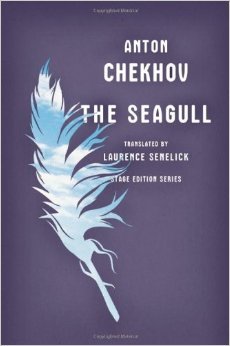Act II — The Seagull
byAct II takes place on a warm afternoon near the tranquil lake on Sorin’s estate, where the sun lights the surface gently while conversations shift under the cool shade of a linden tree. Arkadina, Masha, and Dorn pass the time in seemingly casual talk, yet beneath their words lie complex fears and quiet confessions. Arkadina’s lively anecdotes and harsh wit mask a deeper anxiety—one driven by aging, competition, and the looming threat of being forgotten. Her laughter has edges, cutting into anyone who reminds her of youth or relevance beyond her own. Dorn, half-distracted and contemplative, speaks less but listens more, providing subtle observations that suggest he sees through everyone without judgment. Masha, meanwhile, stands on the edge of despair, openly admitting her love for Treplieff and her inability to escape from it. Her black dress becomes not just a costume, but a daily mourning for a life that refuses to change.
As the scene progresses, new characters arrive, shifting the energy and focus of the group. Sorin, aging and physically declining, tries to maintain conversation, his thoughts slipping between nostalgia and regret. He reflects on missed opportunities and unfulfilled dreams, making him a mirror to the younger characters’ fears. Nina, glowing with idealism and devotion to art, enters full of hope, admiring Arkadina as a symbol of everything she aspires to be. Her enthusiasm is pure but naive, making her both endearing and vulnerable. Medviedenko follows close behind, still grounded in practicality and concern for his child, his presence quietly reminding others of a different kind of burden—responsibility without reward. Their differing worldviews gently collide, exposing the contrast between those who dream of something greater and those simply trying to endure the life they have.
The central tension in the act deepens as talk turns to art and success. Treplieff’s frustration becomes more visible, especially as he watches Nina fawn over Trigorin and listens to Arkadina diminish his efforts. He longs not only to be respected but to create something new, something not yet corrupted by convention. His modernist views clash with Arkadina’s traditionalism, creating a generational and creative rift that never quite resolves. Nina, enchanted by fame and confidence, is drawn more toward Trigorin, who arrives soft-spoken but carries a quiet gravity. Trigorin does not boast, but his aura comes from recognition—he is the success that Treplieff cannot yet claim. Yet Trigorin, for all his accomplishments, is no more secure than the rest. He doubts his originality, his future, and whether his life has real meaning. His fame has not shielded him from fear—it has only delayed it.
Amid the idle walk and talk, relationships begin to tangle further. Polina’s subtle flirtation with Dorn grows more open, revealing layers of dissatisfaction and longing. Her husband’s oblivion—or willful ignorance—adds tension without conflict. Every character’s desire, no matter how small, goes unfulfilled. Whether it’s romantic, artistic, or existential, there is a shared sense that something essential lies just out of reach. The act reveals how emotional hunger can exist even in the most privileged lives, where nothing is urgent and yet everything aches. The natural beauty of the lakeside setting contrasts sharply with the characters’ internal disarray, creating a gentle irony that underscores the act’s deeper meanings.
As the act nears its close, Treplieff acts out in a way that disturbs the tone entirely. Killing the sea gull and offering it to Nina becomes a moment of twisted vulnerability—part gesture, part warning. It is love expressed through destruction, symbolizing not only Treplieff’s feelings for her but his sense of failure and loss. Nina, startled but not understanding the full meaning, reacts with confusion rather than fear. This single act, morbid as it is, becomes a symbol that lingers through the rest of the play. It marks a turning point: where light conversation begins to give way to emotional collapse.
What Act II does so well is layer tension beneath the surface, turning ordinary conversations into slow-burning crises. The charm of the afternoon never quite vanishes, but it fades as words become heavier and glances more pointed. Everyone remains outwardly civil, but inwardly restless. Desires clash with limitations, and each character, in their own way, begins to show the cracks in their carefully curated personas. The play’s themes—ambition, disillusionment, unreturned love—take firmer root here, and the future for each individual becomes more uncertain. By the end of the act, the sun may still shine, but the warmth no longer reaches the hearts seated beneath the linden tree.

